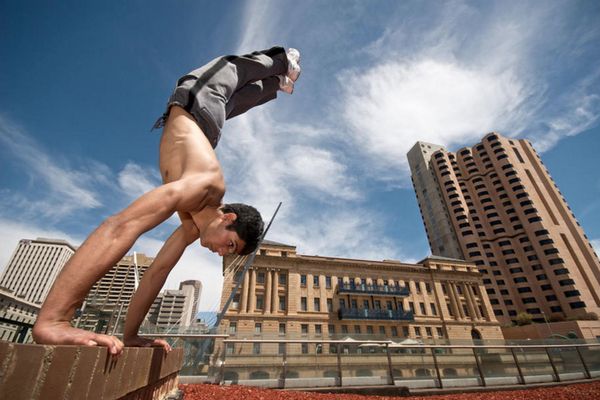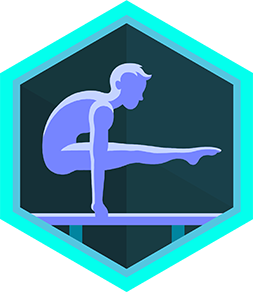Practice a handstand
Learn safe handstand technique through warm-ups, wall drills, and partner spotting. Practice balance, strength, and gradual progressions with adult supervision.



Step-by-step guide to practice a handstand
How to Do a Handstand for Kids: Step-by-Step Guide
Step 1
Clear a space at least two arm spans wide and place the soft mat against the wall.
Step 2
Put on comfortable clothes that let you move easily.
Step 3
Warm up your wrists by making slow wrist circles 10 times each direction.
Step 4
Wake up your shoulders by doing 10 big arm circles to loosen them.
Step 5
Lie on your back and hold a hollow body position for 15 seconds to activate your core.
Step 6
Practice a tuck or frog balance on the floor and hold for 10 seconds to feel balancing on your hands.
Step 7
From a plank position, walk your feet up the wall until your hips are over your shoulders and hold for 10 seconds.
Step 8
From a lunge facing away from the wall, place your hands down and kick one leg up so both feet touch the wall; repeat this kick-up practice five times.
Step 9
Face the wall, walk your hands close to it, and kick up into a chest-to-wall handstand for 10–20 seconds for three attempts.
Step 10
Ask your partner to spot you by standing near your hips and holding your waist as you kick up; do five assisted reps.
Step 11
Try small freestanding kick-ups with your spotter ready to catch you and focus on tight arms and steady legs for five attempts.
Step 12
Gently stretch your wrists and shoulders and take three deep breaths to cool down.
Step 13
Share a photo or video of your handstand practice on DIY.org.
Final steps
You're almost there! Complete all the steps, bring your creation to life, post it, and conquer the challenge!


Help!?
What can we use instead of the soft mat if we don't have one?
If you don't have a soft mat, place a folded yoga mat, thick blanket, or couch cushions against the wall to provide the same padding and support during the wall-assisted plank walks and kick-ups.
I'm falling out of my kick-ups or can't get my hips over my shoulders — what should I try?
If your kick-ups fail or you can't get hips over shoulders, hold the hollow body longer, repeat the plank-to-wall walk exercise, and have your partner spot and hold your waist during the lunge kick-up and five assisted reps while you focus on tight arms.
How can this activity be adapted for younger children or older kids?
For younger children, shorten practice to the tuck/frog balance and plank walks with extra spotting during the five assisted reps, while older kids can aim for longer 20-second chest-to-wall holds and more freestanding kick-up attempts.
How can we extend or personalize the handstand practice to make faster progress?
Create a weekly progression tracking longer hollow holds, extra freestanding kick-ups, add extra wrist and shoulder mobility from the warm-up/cool-down, and share photos or videos of each session on DIY.org to monitor improvement.
Watch videos on how to practice a handstand
How to do a Handstand for Beginners
Facts about gymnastics for kids
🧠 Doing handstands stimulates the vestibular system, helping improve body awareness and focus.
💪 Handstands use your own bodyweight to strengthen shoulders, wrists, arms, and core muscles.
🛡️ Wall drills and partner spotting are simple safety steps that greatly reduce the chance of injuries while learning.
🤸♀️ Handstands flip your usual viewpoint — practicing them boosts balance and spatial awareness.
🤸♂️ Many gymnasts begin handstand training very young (preschool age is common) to build early coordination.
How do I teach my child to practice a safe handstand step-by-step?
What materials and setup do I need to practice handstands at home?
What ages is handstand practice suitable for and when should a child start?
What are the benefits and safety tips for kids learning handstands?


One subscription, many ways to play and learn.
Only $6.99 after trial. No credit card required



